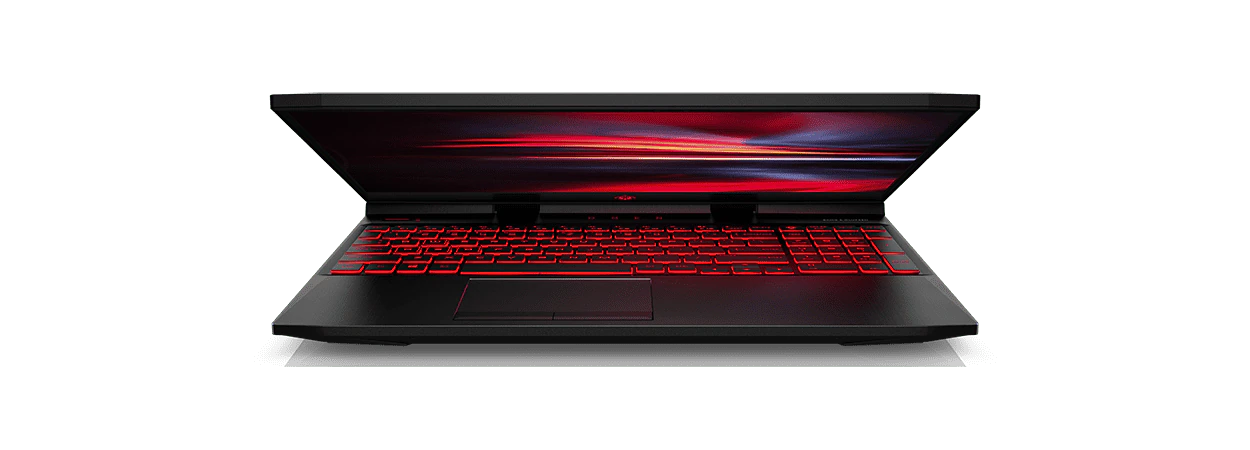Thank you for visiting the HONG KONG HP Store
-
Contact Us
CONTACT USChat with us
- Our specialist are here to help
- Live chat
- Sales
- 85264507529(WhatsApp)
-

- Post Sales
- 85230016720(WhatsApp)
Mon-Fri 8.30am - 5.30pm
(exc. Public Holidays)
Live product demo
Store finder Locate our storesSubmit feedback We value your opinion! - Location
- My Account
Dual Monitor Buying Guide: How to Choose the Best Monitors


Setting up an extra display or replacing an older monitor with a new multiscreen configuration is an excellent way to improve your overall computing experience. A second monitor adds substantial screen real estate; a serious perk for both work and play.
In our dual monitor buying guide, we’ll highlight some of the most important things to think about while you shop, including:
-
Workspace layout and display size
-
Micro-edge display options
-
Low blue light and ergonomic features
-
Don’t forget to match
-
Compatibility and mountability
Of course, your specific routine may call for more questions. If you have other hardware concerns about how a dual monitor setup may work for you, consulting the manufacturer is a good rule of thumb. Check out reviews or support documents where available. And if you own HP monitors, we have a technical guide to help newcomers to this style of use.
Key pieces to keep in mind
When thinking about stepping up to a dual-monitor setup, first think about what you like and don’t like about your current display. The best dual monitor setups prioritize not only improved visual quality but also your comfort while using the displays.
That means it may be useful to focus on physical details.
-
Is your current display’s build too clunky?
-
Are the edges distracting or obtrusive while you work?
-
Does it wear on your eyes after even short periods of use?
These are all concerns that can help you prioritize the features most important to you.
1. WORKSPACE LAYOUT AND DISPLAY SIZE
Fitting your display setup to your workspace is always a top priority, particularly if you find yourself frequently adjusting the orientation or layout of your display. If your space is too tight and you add too many displays, you’ll find it’s challenging to make easy adjustments, especially across multiple devices.
Fortunately, you can add mounting hardware to your setup. It’s a great way to overcome limited or unconventional workspaces, saving tons of surface space, decluttering your desk, and improving your level of accessibility.
The Ergotech Dual LCD monitor desk stand is a convenient and affordable way to do this. It’s easy to assemble for two monitors at up to 24 inches each, and you can even get support for as many as six total displays.
While size preferences are mostly driven by routine and use, we’ll talk more below about some of the other ways that display dimensions can come into play.


The HP P22h G4 FHD monitor is an affordable compact option with robust features and the right dimensions for smaller workspaces. For bigger workspaces, the HP P27h G4 FHD provides more screen space at around the same price point.
2. MICRO-EDGE DISPLAY OPTIONS
With a single display, a large edge or border around the usable screen area may not be too distracting. But when you use multiple displays, the problem may become glaringly obvious and annoying, as well. Instead of a single large edge, additional displays mean you’re doubling up that unusable space. This may grow even more distracting if you need to leave room between your displays for easy adjustment.
This plays a big role in why many displays are built with micro-edges. Typically referred to as a 3-sided micro-edge bezel, this design reduces obstruction on the top and sides of your displays. It provides an almost seamless field of view when you use multiple displays.
The HP Z22n G2 21.5-inch monitor is a great example in a smaller size class, offering a compact build and slim display edges. Plus, it has the added benefit of rigorous HP Z design and testing, including the HP zero bright dot guarantee.


For a larger screen with micro-edge bezels, check out the HP E27 G4 FHD Monitor.
3. LOW BLUE LIGHT AND ERGONOMIC FEATURES
It’s also important to think about comfort and ergonomic features, like low blue light and stand adjustability. Blue light can become disruptive after extended exposure, and it can upend your circadian rhythms if you spend long periods in front of a screen.
Look for displays with a dedicated low blue light mode to reduce the strain. In the HP store, you can check the description or display features under the specs tab on individual product listings. The HP P22h G4 we mentioned earlier is a great example, featuring anti-glare and its own low blue light mode.
Full adjustability is also important, since it allows you to change the height, tilt, swivel, and pivot rotation of your display. This may not be a dealbreaker, but adjustability options make your setup much easier to fine tune over time. It allows you to make small changes to your layout as you get more familiar with the device.


If you’re looking for the best of both worlds, we highly recommend the HP U27 4K wireless monitor. It’s a popular option that features both a low blue light mode and complete 4-way adjustability. It’s also one of our top display models, with generous screen dimensions and the benefit of full 4K (3840 x 2160).
4. COMPATIBILITY AND MOUNTING
If you plan to mount your display on a wall or swivel it to portrait mode, it’s important to check its compatibility. Thankfully, mountable displays are increasingly standard and most HP displays feature a standard VESA mount adapter to help you with setup.
With the extra space and flexibility afforded by wall mounting, you may prefer a large display, even when incorporating two of them. As a tip, you can get the most bang for your buck (and effort) if you opt for something at or above the 27-inch mark.


The HP X27q QHD Gaming Monitor is an option with Quad High Definition (QHD) resolution (2560 x 1440). It also features a dedicated low blue light mode, so you won’t have to worry about the expanded size creating additional eye strain.
5. REMEMBER TO MATCH
While the idea of matching display manufacturers may seem like a superficial concern, it actually guarantees that you’re maximizing your investment. The best dual monitor setup or multi-screen configuration should help simplify your routine and minimize distractions.
However, displays with different features or physical configurations may be just as distracting as a congested workspace. You may experience visual inconsistencies and frustrations working with screens from different manufacturers. Plus, there’s the added hassle of trying to figure out how to troubleshoot two different makes of display.
As a result, we recommend pairing two monitors from the same company (we suggest 2 HP monitors, of course) to create the best two monitor setup for your needs.
Advantages of using multiple monitors
The main advantage of adding an extra display is an improved workflow, especially for more complex routines, but you can experience the related perks no matter how you use your computer. With more screen space, it’s much easier to run several programs simultaneously, which means you’re not wasting time clicking back and forth between programs or tabs, minimizing and maximizing, and so on.
As we’ve mentioned, you’ll also dramatically reduce desktop and workspace clutter. With a bigger display and a dual-display mount, it’s easy to reclaim lost space on your PC and your desk. With the right mounting system and a wireless display, you can clear tons of surface area and start experimenting more with your layout and peripherals.
When to consider a dual monitor gaming setup
While there are benefits to a double gaming monitor setup, most gamers don’t actually use this configuration to extend their game across two screens. While some users add an extra screen simply to increase their display space, gamers typically use a dual-monitor setup to multitask while they play.
In this scenario, one monitor is dedicated to gaming and the other to keep up with other activities like checking email or social media, reading articles online, or chatting in a live stream. Plus, it’s incredibly useful for when you hit a particularly challenging moment in a game and need to refer to a walkthrough or video for help.


If you want to get started with a dual monitor gaming setup, check out the HP OMEN gaming monitors and pimp your setup with a pair of 27-inch displays.
Some digital warriors prefer a triple monitor setup
PROFESSIONALS AND BUSINESSPEOPLE
If you spend hours each day on Zoom meetings, but also need to stay up-to-date with email, Teams, or Slack, a third screen can be a boon to organizing your workday tasks. Research or number crunch on one screen while you keep an eye on incoming messages that need to be addressed.
Join your Zoom call without losing access to your spreadsheets and Google Docs. In this day of connectivity, a timely answer to your colleagues sometimes depends on moving projects forward on multiple screens.
GAMERS
If a two monitor gaming setup is mostly used for multitasking, why would some gamers prefer a triple monitor setup? The answer is simple and actually boils down to the physical construction of displays. While two monitors tend to obstruct your view where the right and left edges meet, a three-monitor setup solves that problem.
Newer games and hardware often provide support for this configuration specifically. With a central screen and two peripheral displays, the display edges are less distracting if you need the extra space. Imagine the cockpit of a plane: two panels would leave only a right and left view, while three provide a clear panorama and wide viewing angles for your resting view.
In this case, the size of the display is also important. While using three displays sidesteps the distracting center of view, you may lose a sense of immersion if your displays are too small and the edges stand out. The smaller your displays, the closer those distracting edges are to your immediate field of view. This won’t apply to everyone, of course, but it’s absolutely worth keeping in mind. If you’re used to playing games on smaller screens, you may not even notice.


The HP X27i 2k gaming monitor is a versatile choice for this task. The 27-inch screen size is large enough for comfort and compact enough to fit multiple displays into your gaming spaces. It also features stunning QHD resolution (2560 x 1440), 4 ms response rate, and a blazing-fast 144 Hz refresh rate, making it especially well-suited for gaming.
Get started with your own multiscreen setup
If you’re curious about how to connect and start using a dual monitor setup, you can refer to our guide on How to Set Up Dual Monitors for more information.
Shop according to budget and style
Whether you use two, three, or even more displays, you’re about to enjoy some serious visual perks, however, you use your PC. Evaluate your workspace, think outside the box for mounting and layout, and choose which multi-display setup will boost your productivity and broaden your digital horizons.
- Our specialist are here to help
- Live chat
- Sales
- 85264507529(WhatsApp)
-

- Post Sales
- 85230016720(WhatsApp)
Mon-Fri 8.30am - 5.30pm
(exc. Public Holidays)
Live product demo









